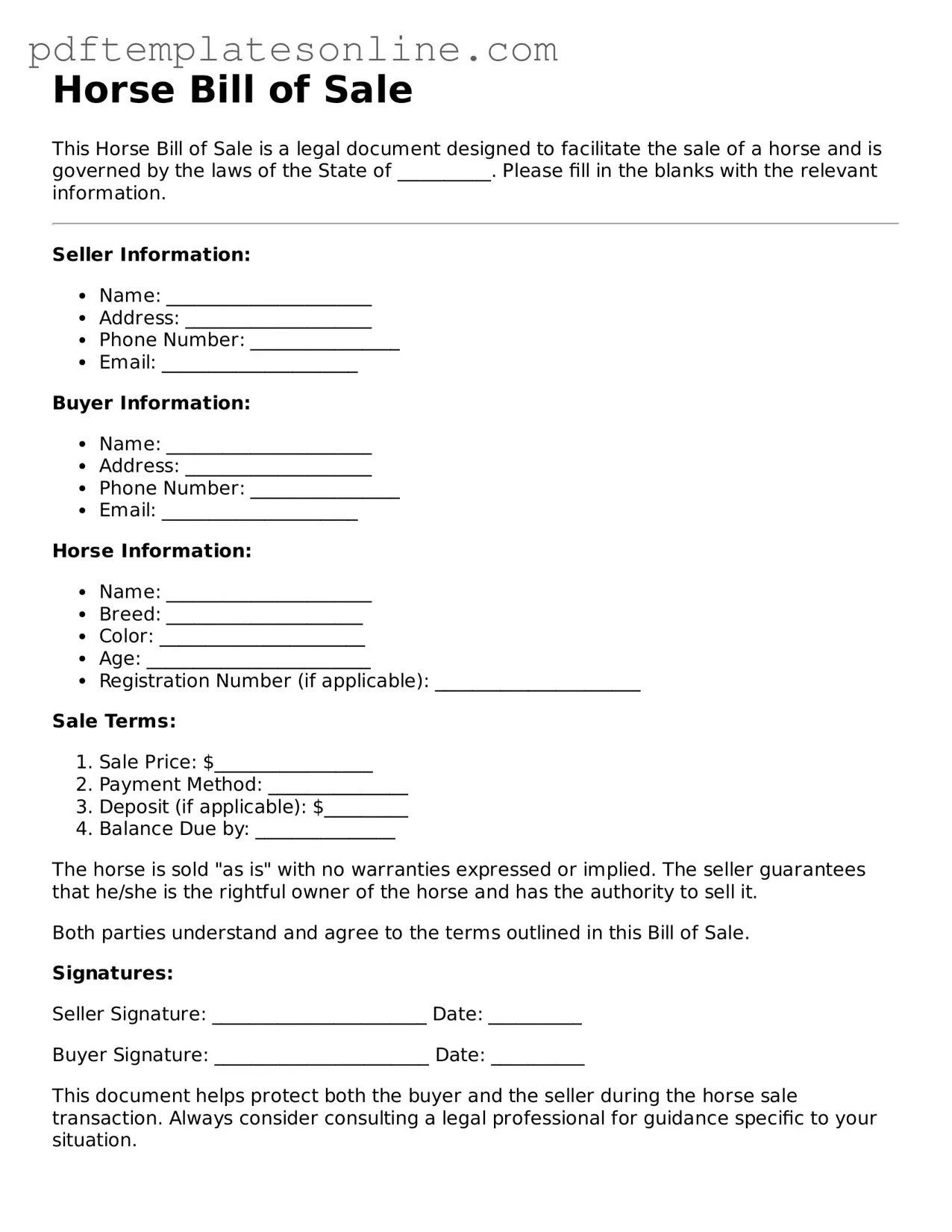When filling out a Horse Bill of Sale form, individuals often overlook critical details that can lead to complications in the transaction. One common mistake is failing to include complete and accurate identification of the horse. This includes details such as the horse's name, breed, age, color, and any identifying marks. Without this information, it may be difficult to prove ownership or resolve disputes later.
Another frequent error is neglecting to specify the sale price. The sale price is a crucial element of the transaction, and its absence can create ambiguity. Both the buyer and seller should agree on a price and document it clearly on the form. This helps protect both parties in case of future disagreements.
People also sometimes forget to include the date of the sale. The date is important for establishing the timeline of ownership transfer. It can impact various legal rights and responsibilities, including liability for any incidents that occur after the sale.
Additionally, some individuals may not obtain the necessary signatures. Both the seller and the buyer should sign the document to validate the transaction. Without signatures, the bill of sale may not hold up in a legal context, potentially leading to disputes over ownership.
Another common oversight involves not providing a clear description of any warranties or guarantees. If the seller is offering any assurances about the horse's health or performance, these should be explicitly stated. Failure to do so can lead to misunderstandings and dissatisfaction after the sale is completed.
Finally, individuals may overlook the importance of retaining copies of the bill of sale. Both parties should keep a signed copy for their records. This documentation serves as proof of the transaction and can be vital in resolving any future issues related to ownership or liability.
